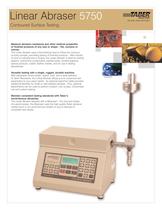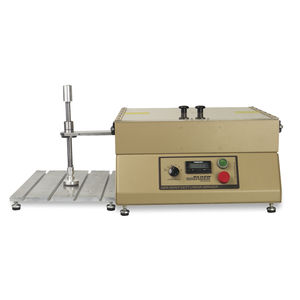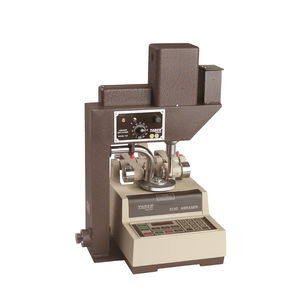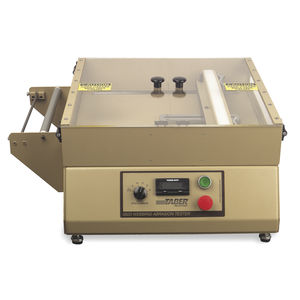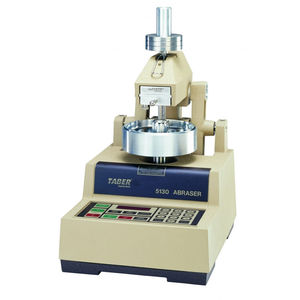
Linear array abrasion tester 5750




Add to favorites
Compare this product
Characteristics
- Options
- linear array
Description
The TABER® Linear Abraser (Abrader) - Model 5750 has been engineered to test either contoured or flat surfaces, making it ideal to evaluate finished products of all sizes. To expand the versatility of this instrument, the Linear Abraser can be configured with optional test attachments to perform different types of abrasion tests. And can be used for both wet and dry testing.
Description
The Taber Linear Abraser incorporates a horizontal arm that reciprocates in a linear motion. Attached to the end of the arm is a precision bearing spline shaft that creates a 'free-floating' test system and permits vertical movement. The test attachments are affixed to the bottom of the spline shaft and a weight support is mounted to the top. As the horizontal arm strokes back and forth, the test system raises or lowers vertically as the test attachment follows the contours of the specimen. A laser alignment guide assists with specimen set-up to ensures the abradant travels over the desired area.
Adjustable settings enable the user to select the speed, stroke length and test load. The Linear Abraser includes six preset speed buttons, along with the ability to adjust the speed from 2 to 75 strokes per minute. Eleven stroke lengths are standard ranging from 0.2 inch to 4.0 inch.
The base load of the "free-floating" test system is 350 grams and consists of the test attachment; spline shaft; and weight support.
Three 250g weight discs are supplied with the instrument and optional weight discs ranging from 10 to 250 grams can be added to the weight support to increase the test load to approximately 2100 grams.
VIDEO
Catalogs
TABER Linear Abraser
2 Pages
*Prices are pre-tax. They exclude delivery charges and customs duties and do not include additional charges for installation or activation options. Prices are indicative only and may vary by country, with changes to the cost of raw materials and exchange rates.


